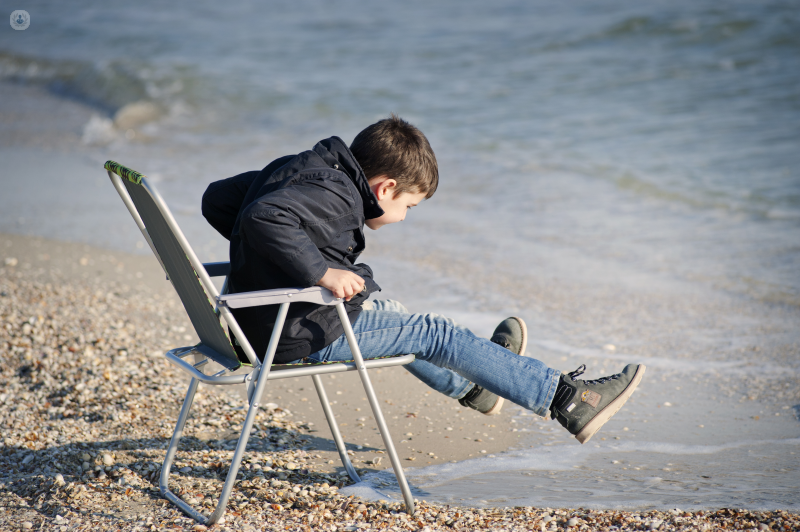Development of the legs in children
Written by:Children are developing the position of their legs throughout their early years, but you have to know when it is normal and when you have to go to an expert. For this we must define what we call angular pattern , understood as the appearance of the lower extremities of children when looking at them from the front when we observe them standing with their legs together.
Within that posture we refer to knees rods or "genu var" when the ankles touch, the knees are separated from each other and the legs are arched outwards. The term knees valgas or "genu valgo" is called when the knees are touching, the ankles are separated from each other and the legs have a disposition in X.
There is great personal variability in the angular pattern that changes as the child develops. The following situations occur naturally (image):
• Birth: there is a normal genu (up to 15 degrees on average).
• Up to 2 years old: loss of genu var until the legs are fully aligned.
• Up to 3-4 years old: a genu valgo progressive (up to 11 degrees on average).
• Up to 7 years: realignment with loss of part of the valgus.
The anatomical final situation is of a moderate valgus genu of about 7 degrees on average, with a variation of a scale of 10 degrees, so it is normal to find from a mild varus to a moderate valgus.

Exploration
If the arching of the legs is normal or not, it is an assessment that a specialist in pediatric orthopedics must perform by an adequate examination of the child's extremities.
First, the distance separating the ankles in the genu valgus or the knees in the genu varro can be measured.. In this examination, the separation of knees above 6 cm or the separation of ankles above 8 cm should be considered outside the normal limit.. Second, you should explore the load axis of the leg. For this, a tape is placed from the hip to the second toe and checked if it is included in the knee.
In this case, it is outside the normal limit when the load axis is external or internal to the knee. The examination should take into account that the clinical aspect tends to get worse when the child is standing with respect to when he is stretched on the stretcher, it is also necessary to know that the knee flexion increases the appearance of genu var and the extension of the knee increases the genu valgo appearance. In addition, the specialist must take into account that alterations in the rotational pattern modify the angular aspect.
When examining the legs in profile they should be aligned and should be able to make a full extension of the knee. However, it is possible to make a forward extension of the knee beyond normal. This is called "recurvatum" of the knee, this is frequent in the small child - and especially in the female sex - due to the great elasticity of their tissues and joints.. But it is no longer normal for the forward movement to exceed 20 degrees. In the same way, it is also not normal to be able to stretch the knee completely.
When to go to the specialist
So far the development process explained is usual and can lead to the child being more clumsy and falling during this process of change, so we should not worry. Yes you have to alert yourself and go to a specialist when there is:
1. A separation of the knees greater than 6 cm when the ankles are together.
2. A separation of the ankles greater than 8 cm when the knees are together.
3. If the knee does not get a full extension .
Four. If the knee extends more than 20 degrees forward.
5. When there is a marked asymmetry between one leg and another.


